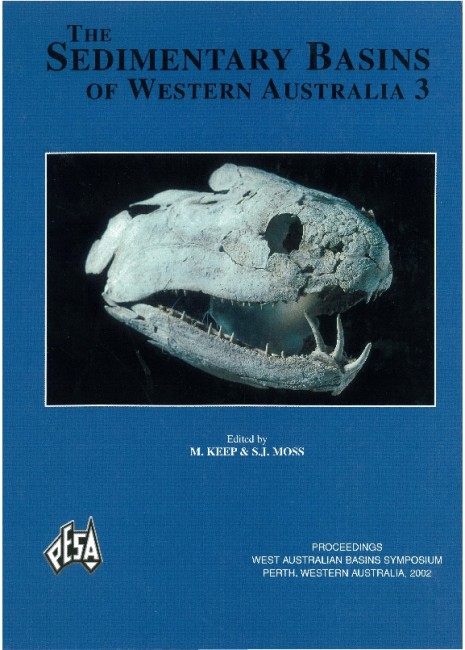Publication Name: The Sedimentary Basins of WA
Authors: G.K. Ellis & K.E. Jonasson
Publication Volume: 3
Date Published: December 2002
Number of Pages: 29
Reference Type: Book Section
Abstract:
The Rough Range Oil Field in the onshore Carnarvon Basin was discovered in 1953 by West Australian Petroleum Pty Ltd with the drilling of Rough Range 1, which intersected an 8.6 m gross oil column in the Early Cretaceous Birdrong Sandstone. Twelve appraisal wells have subsequently been drilled, and only Rough Range 1A (10m east of Rough Range 1) and Rough Range 1B (14.5 m west-southwest of Rough Range 1A) have intersected the oil column. A total of 6,960 kL ( 44,673 BBL) of 38.6? API oil have been produced in three separate extended production tests.The surface expression of the Rough Range structure is an elongate northeast-trending anticline. At the Birdrong
Sandstone level, the structure is less dearly defined. It appears to be a complexly-faulted anticline adjacent and to the west of the north-northeast-trending Rough Range Fault, which forms the southeastern margin of the
Exmouth Sub-basin. The main development of the Rough Range structure probably occurred in the Miocene.
The Rough Range and adjacent Parrot Hill structures do not appear to be filled to the structural spill point,
possibly due to vertical leakage of oil and limited oil generation and migration into the structures. However it is
considered more than likely that the Rough Range structure was charged with oil when it was a small closure,
prior to Miocene tectonism. Inhibited quartz overgrowth development, pyrite cementation and oil shows within the reservoir define three palaeo-oil accumulation geometries produced by subtle structural modification of this small closure.


